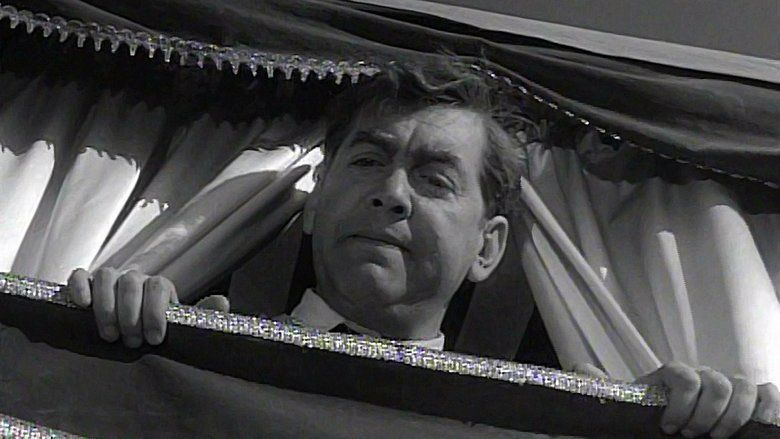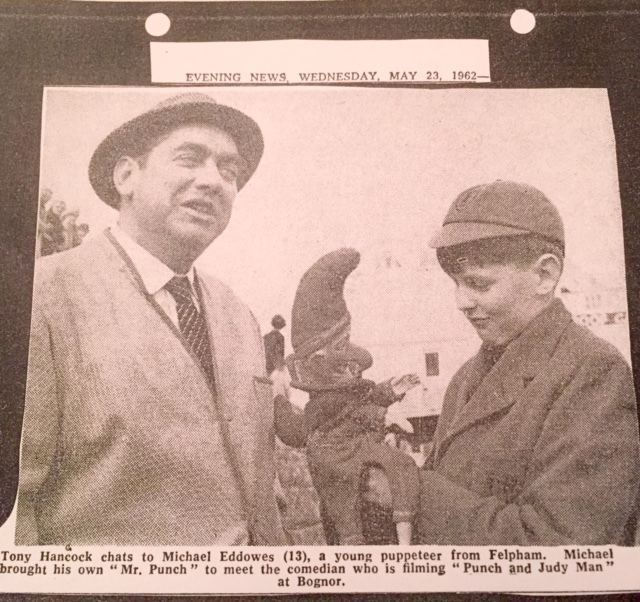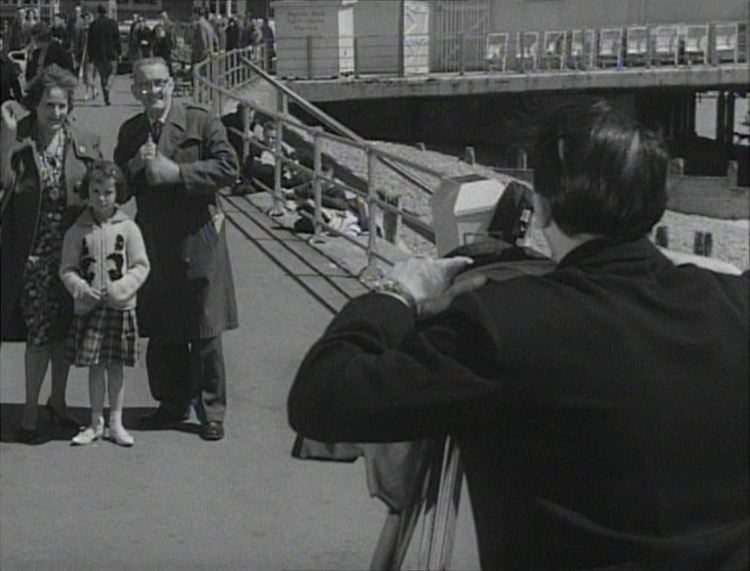The Punch and Judy Man
6.2 /10 1 Votes
6/10 Letterboxd Genre Comedy Duration Country United Kingdom | 6.5/10 IMDb Language English | |||||||||||||||||||||||||||||||||
 | ||||||||||||||||||||||||||||||||||
Release date 8 April 1963 (1963-04-08) (UK) Cast Tony Hancock (Walter Pinner), Sylvia Sims (Delia Pinner), (Mayor Palmer), (Lady Jane Caterham), (The Sandman), (Committee Man)Similar movies Related Jeremy Summers movies | ||||||||||||||||||||||||||||||||||
The Punch and Judy Man is a 1963 British comedy film directed by Jeremy Summers from a script by Philip Oakes and Tony Hancock for the Associated British Picture Corporation. It was Hancock's second and last starring role in a film, following The Rebel (1961).
Contents

Plot

Based on Hancock's childhood memories of Bournemouth, the movie is set in 1963 in the sleepy fictional seaside town of Piltdown. Hancock plays Wally Pinner, the unhappily married Punch and Judy Man. Wally and the other beach entertainers, the Sandman (John Le Mesurier) who makes sand sculptures, and Neville the photographer (Mario Fabrizi) are socially unacceptable to the town's snobbish elite.

Wally's wife, Delia (Sylvia Syms), runs a typical seaside curios shop of the time below their flat, and is socially ambitious. To achieve this she needs to have Wally invited to entertain at the official reception for Lady Jane Caterham (Barbara Murray), who is to switch on the town's illuminations, and at the mayoress's suggestion the reception committee invites Wally to entertain.

The illumination ceremony ends in farce when Wally's electric shaver shorts out some of the lights, causing some of the illuminated signs to display unflattering comments about the town. The dinner degenerates into a food fight when one of the drunken guests heckles Punch, and when Lady Jane rounds on Wally, Delia floors her with a punch. Her dreams of social acceptance are gone, but Wally and Delia retire, wiser and closer.
Background

The town of Piltdown is apparently named after Piltdown Man.

The film is a gentle but bitter-sweet comedy, and provides some considerable insight into Hancock himself. The screenplay by Hancock and Philip Oakes appears to be based partly on Hancock's own life and marriage. In an early scene, Wally and Delia have breakfast in almost total silence, and the scene demonstrates that they are married from habit, and no longer have anything in common. The scene is often considered to be an observation on Hancock's marriage to the former Cicely Romanis.

In the following scene, Wally angrily rams a bunch of flowers up a porcelain pig's backside. The flowers were first intended to go up the pig's nose, but Hancock argued that the joke had to be stronger and so a prop with a suitable orifice was made. Delia later discovers the flower-abused pig in a socially awkward situation. The beginning of this scene was cut from the DVD, and from many television versions (though a still survives), leaving only the moment when Delia finds the flowers.
In another scene, Wally retreats from the rain into an ice cream parlour with a small boy, played by Sylvia Syms' nephew, Nicholas Webb. The boy asks for a large sundae (a "Piltdown Glory") and Wally orders the same. Then, because he is uncertain of the correct etiquette for eating the dessert, Wally carefully watches the boy and imitates his every move. The scene was done in several takes and in between each take Hancock would rinse his mouth with vodka to remove the taste of the ice cream, which he disliked.
Several actors from Hancock's earlier television series, Hancock's Half Hour, also appear in supporting roles: John Le Mesurier, Hugh Lloyd, Mario Fabrizi and (briefly) Hattie Jacques. Syms was cast as Delia after Billie Whitelaw withdrew. Roger Wilmut, in Tony Hancock: Artiste (1978), argues that the climactic food fight escalates too quickly and that a more experienced director would have been given it more time to develop comedically.
The film itself was partly shot on location in Bognor Regis, and when the producers asked for some local people to take parts as extras, over 2,000 people turned up. Many parts of the town are immortalised in the film; the pier and the town hall feature alongside other areas such as Spencer Street, Belmont Street, and York Road, beside the Esplanade and Royal Hotel, where in fact the film crew stayed. Tony Hancock himself stayed at the more expensive and smarter Royal Norfolk Hotel during filming.
Cast
References
The Punch and Judy Man WikipediaThe Punch and Judy Man IMDbThe Punch and Judy Man LetterboxdThe Punch and Judy Man themoviedb.org
